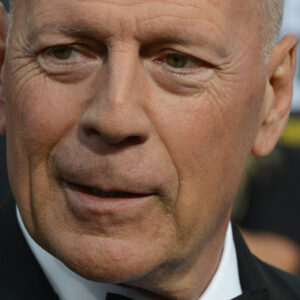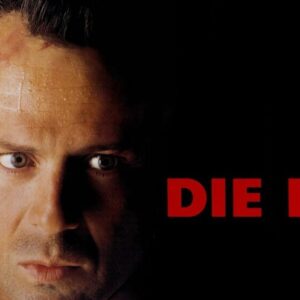Introduction:
Bruce Willis, a name synonymous with action-packed blockbusters like Die Hard and The Fifth Element, is often recognized as one of Hollywood’s most versatile actors. While his commanding presence on the big screen is well-established, his contributions to television are just as significant. Bruce Willis’s journey from television to film and back again highlights the seamless transition of a true artist who thrives in both realms. Key to his success on television has been his ability to collaborate with visionary TV directors who helped mold his performances into some of the most memorable moments in entertainment history.
In television, more than in film, the relationship between actor and director plays a pivotal role in shaping the final product. TV is often a writer’s medium, but it’s in the collaboration between actors and directors that the written word transforms into on-screen magic. For Willis, his partnerships with directors have been crucial in delivering compelling content, whether in long-running TV series or memorable guest spots. His work on television showcases not only his range as an actor but also his ability to adapt, evolve, and bring life to different kinds of stories, always relying on strong creative alliances.
Bruce Willis’s TV Career Overview:
Willis’s journey into the hearts of TV audiences began with his breakthrough role in Moonlighting (1985-1989), where he played the wise-cracking detective David Addison. Paired with Cybill Shepherd, Willis’s quick wit and undeniable charm made the show a hit, turning him into an overnight sensation. The role was far from the tough-guy persona he would later adopt in action films; instead, it revealed his comedic timing and ability to deliver clever dialogue—a skill that would serve him throughout his career. His portrayal of Addison wasn’t just a character; it was a revelation of Willis’s innate charisma, and it set the tone for his later work in television and film.
Despite his success on Moonlighting, Willis was quick to pivot to film, launching his movie career with Die Hard in 1988. His transition from TV to movies marked a turning point, yet he never fully abandoned television. Throughout the years, Willis continued to return to the small screen, often in guest appearances or select TV roles that allowed him to flex his acting muscles in new ways. Whether playing an animated version of himself in Friends or bringing gravitas to his role in The Twilight Zone, Willis’s television appearances remained selective but impactful, contributing to his lasting popularity in the medium.
For Willis, television has always been a creative playground where he could experiment with different genres and characters. The medium allowed him to explore sides of his craft that big-budget films sometimes did not. Through these appearances, his evolution as an actor was clear, and his TV work helped shape the public persona that fans worldwide know today.
Key Collaborations with TV Directors:
No discussion of Bruce Willis’s television career is complete without delving into his partnerships with influential TV directors. One of the most important figures in Willis’s early career was Glenn Gordon Caron, the creator and showrunner of Moonlighting. Caron’s trust in Willis’s talents allowed the actor to fully embrace the offbeat, fast-paced dialogue that defined the series. Together, they created a show that was both ahead of its time and deeply resonant with audiences. Willis and Caron’s collaboration was built on mutual respect—Caron understood Willis’s comedic instincts, while Willis trusted Caron’s vision, making their partnership a cornerstone of the show’s success.
Similarly, in Robert Altman’s The Player (1992), a satirical take on Hollywood, Willis’s cameo highlighted his ability to work with a legendary director who valued improvisation and a naturalistic approach. Altman’s fluid, collaborative style allowed Willis to inject authenticity into even the briefest of performances. This kind of trust between actor and director is what defines Willis’s work in television, where the actor relies on the director’s guidance to craft characters that are both believable and engaging.
Throughout his career, Willis has shown an impressive ability to collaborate with directors across various TV genres, from sitcoms to dramas. Whether he’s guest-starring in long-running series like Friends or playing himself in animated form on Family Guy, the partnerships he forms with directors are central to his ability to bring humor, gravitas, or intensity to a role. Each collaboration reveals something new about his range as an actor, underscoring the importance of strong working relationships in the television industry.
The Collaborative Process:
Bruce Willis’s approach to working with TV directors can be summed up in one word: communication. He values open dialogue, understanding that TV is often more fast-paced than film, requiring actors to adapt quickly to the director’s vision. In television, where episodes are shot within a tight timeframe, trust between actor and director is crucial. Willis excels in these high-pressure environments, relying on a mutual understanding with the director to bring the character to life.
Directors have praised Willis for his willingness to engage in the creative process. Rather than simply taking direction, he often brings his own ideas to the table, suggesting changes or adjustments that can improve a scene. His collaborative nature was evident in shows like Moonlighting, where behind-the-scenes stories reveal how Willis’s input often enhanced the dialogue or brought a fresh energy to a scene. His hands-on involvement in these moments highlights his commitment to the creative process, a trait that has endeared him to directors throughout his career.
Moreover, Willis’s adaptability to different TV formats showcases his versatility. Whether playing a comedic character, a brooding antihero, or a guest role that adds a humorous touch to a scene, he demonstrates a willingness to trust the director’s guidance. This flexibility makes him a sought-after actor in television, as he can easily shift between genres and styles, always delivering a performance that feels authentic to the tone of the show.
Willis’s Impact on TV Projects:
One of the most significant aspects of Bruce Willis’s collaborations with TV directors is the unique energy he brings to each project. Willis’s star power often elevates TV productions, infusing them with a sense of importance that attracts viewers and raises the stakes for the show. His presence alone can be enough to draw audiences, but it’s his ability to create characters with depth and nuance that keeps them watching.
In many of his television roles, Willis strikes a balance between serious drama and witty humor. This dynamic is particularly evident in shows like Friends, where he plays a no-nonsense father with moments of vulnerability. The strong director-actor synergy in these scenes allows Willis to deliver a performance that feels both larger-than-life and grounded in reality.
In addition to his on-screen performances, Willis’s contributions behind the scenes are just as important. Directors often speak of his collaborative nature, noting how his feedback can shape the direction of a scene or episode. This level of involvement is a testament to his commitment to the medium, as he doesn’t simply show up to perform but takes an active role in ensuring the overall success of the project.
Learning from TV Directors:
One of the key lessons Bruce Willis has absorbed from working with TV directors is the importance of pacing and timing. Unlike film, where scenes can be drawn out for dramatic effect, television requires a faster rhythm, with actors delivering lines and emotions within tighter time constraints. Willis’s ability to adjust to this format is a skill honed through years of collaboration with directors who understand the unique demands of television.
In television, the storytelling is often more intimate than in film, and Willis has embraced this shift in scale. Directors have helped him adapt to the smaller screen by focusing on subtle gestures and expressions that convey emotion without the need for grand, sweeping moments. This collaborative effort between actor and director allows for performances that feel personal and engaging, drawing viewers into the story in a way that only television can achieve.
Conclusion:
Bruce Willis’s work with television directors has been instrumental in shaping his career, allowing him to explore a wide range of characters and genres. From his early days on Moonlighting to his more recent guest roles, Willis has consistently delivered compelling performances that showcase his versatility as an actor. These collaborations have not only contributed to the success of individual TV projects but have also enriched Willis’s own creative journey.
By trusting the vision of directors and engaging in a collaborative process, Willis has been able to bring depth, authenticity, and humor to his television roles. These partnerships highlight the importance of actor-director synergy in producing memorable content, and they continue to influence Willis’s work, both on television and in film. Ultimately, it’s these collaborations that have cemented Bruce Willis’s status as one of the most dynamic and enduring talents in the entertainment industry.





